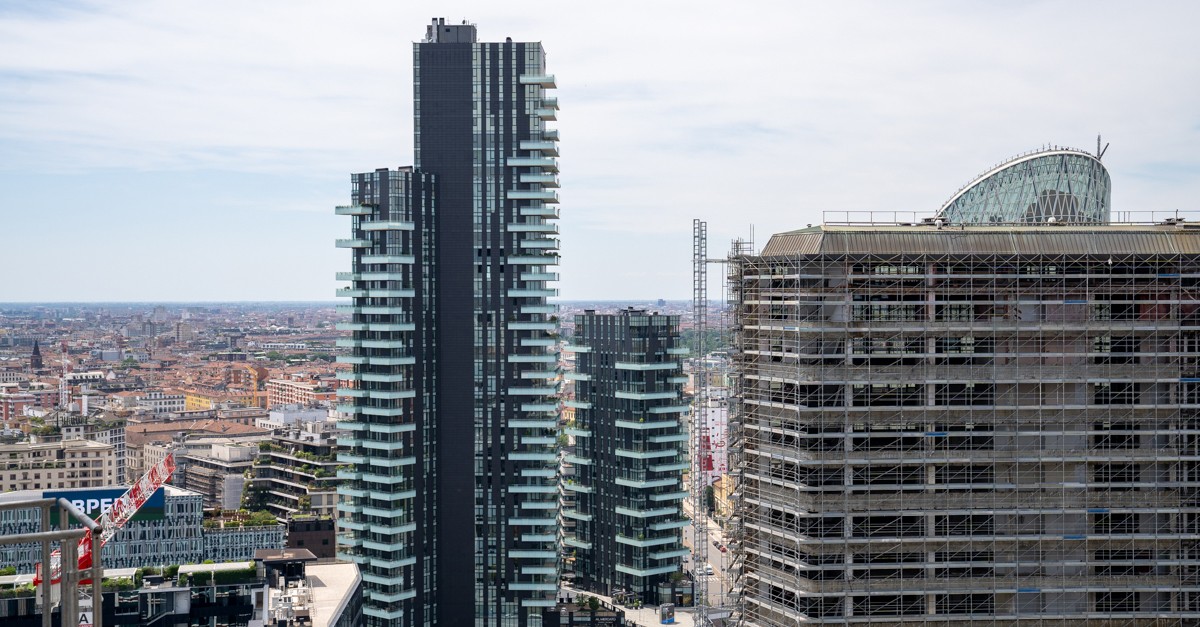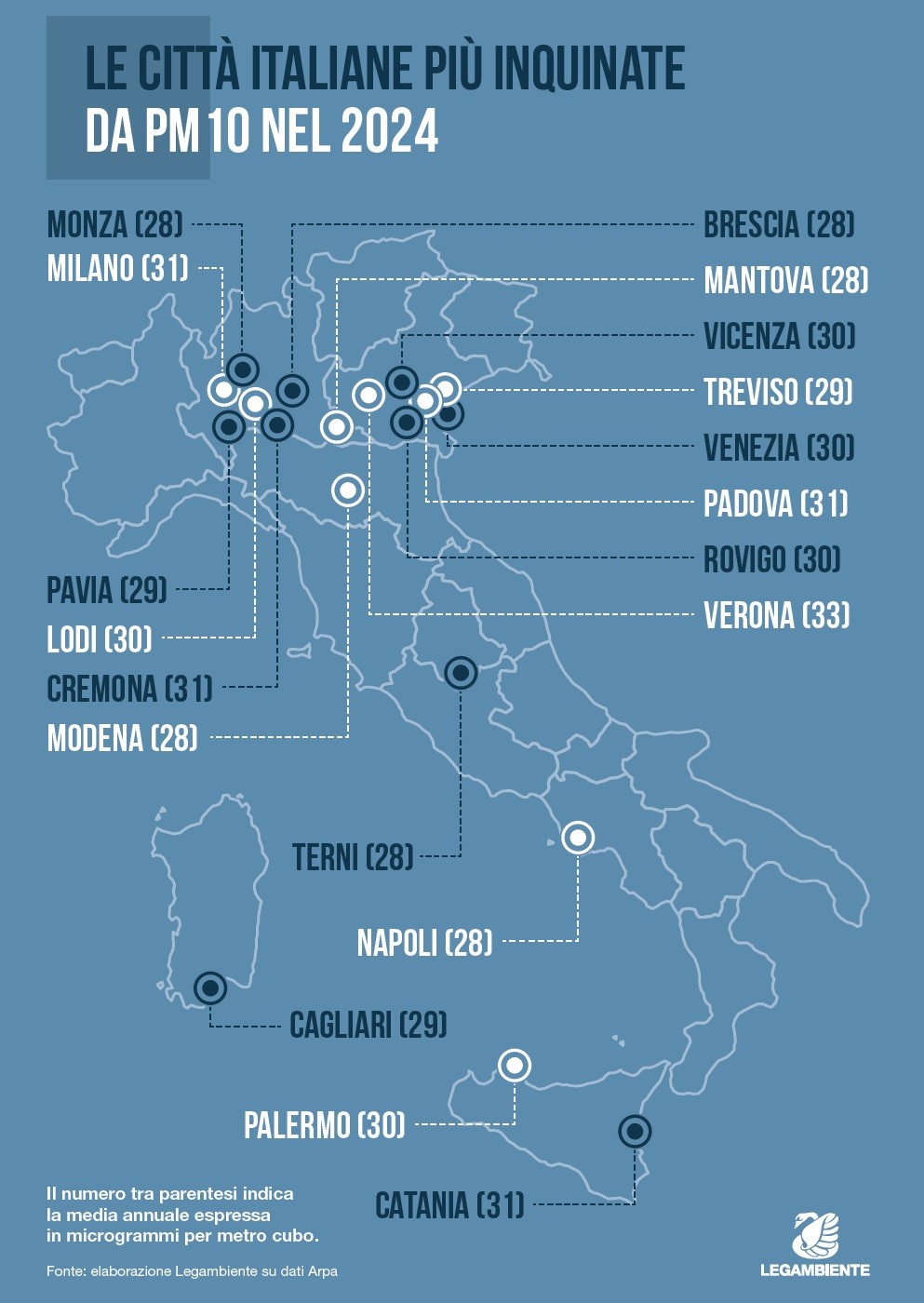
The year 2030 is fast approaching, marking a significant shift in environmental sustainability within EU member states. Yet, according to Legambiente, there is still much to be done in Italy. The Mal'Aria 2025 report lists the worst Italian cities for air quality, identifying 25 cities that exceeded the legal limits for PM10 over the past 12 months. Here’s the list.
The most polluted cities in Italy in 2024
25 out of 98 monitored Italian cities surpassed the legal limits for PM10, set at a maximum of 35 days per year with a daily average exceeding 50 micrograms per cubic metre. Overall, 50 monitoring stations across different urban areas recorded pollution levels above the permitted threshold.
At the top of the pollution ranking is Frosinone (Frosinone Scalo), with 70 days exceeding the limits, holding the unenviable position for the second consecutive year. Next is Milan, where the station on Via Marche recorded 68 exceedances, with other city locations also exceeding the limits: Senato (53), Pascal Città Studi (47), and Verziere (44). Verona ranks third, with the Borgo Milano station recording 66 days of exceedance and Giarol Grande 53.
Vicenza is also among the most affected cities, with San Felice at 64 exceedances, Ferrovieri at 49, and Quartiere Italia at 45. Padua reports critical data, with the Arcella station at 61 days and Mandria at 52, while Venice is no exception, with Via Beccaria at 61 exceedances and another four stations exceeding the limit: Via Tagliamento (54), Parco Bissuola (42), Rio Novo (40), and Sacca Fisola (36).

These cities are joined by Cremona, Naples, Rovigo, Brescia, Turin, Monza, Modena, Mantua, Lodi, Pavia, Catania, Bergamo, Piacenza, Rimini, Terni, Ferrara, Asti, and Ravenna, highlighting that air pollution is a widespread structural problem, far beyond individual local emergencies.
The challenge of 2030: new limits
While in 2024 no city exceeded the legal limits for annual averages of PM10 and NO2, the scenario will change with the entry into force of the new European Air Quality Directive, set for January 1, 2030. The new PM10 limit will be set at 20 µg/m³, a threshold that only 28 cities out of 98 would currently meet. This means that 70 cities risk being out of compliance with the law.
Among the cities that will need to reduce their emissions the most (between 28% and 39%) are Verona, Cremona, Padua, Catania, Milan, Vicenza, Rovigo, and Palermo. The situation is equally alarming for nitrogen dioxide (NO2): currently, 45% of provincial capitals (44 out of 98) do not meet the new limit of 20 µg/m³. Naples, Palermo, Milan, and Como are among the most critical, with reductions of between 40% and 50% required.
Sustainable mobility: the key to the future
Addressing the smog emergency requires structural and synergistic interventions, with strong policies targeting all sectors responsible for pollution. Investments are needed in electric and efficient local public transport, more space for pedestrians and cyclists, energy efficiency upgrades for buildings, and a reduction in emissions from the agricultural and livestock sectors, particularly critical in the Po Valley.
To raise public awareness of these issues, a new edition of Città2030 is launching, an itinerant campaign promoting sustainable, zero-emission mobility. With 20 stops in as many Italian provincial capitals, the initiative aims to assess the preparedness of cities for the 2030 deadlines and promote a safe, efficient, and inclusive transportation system.
